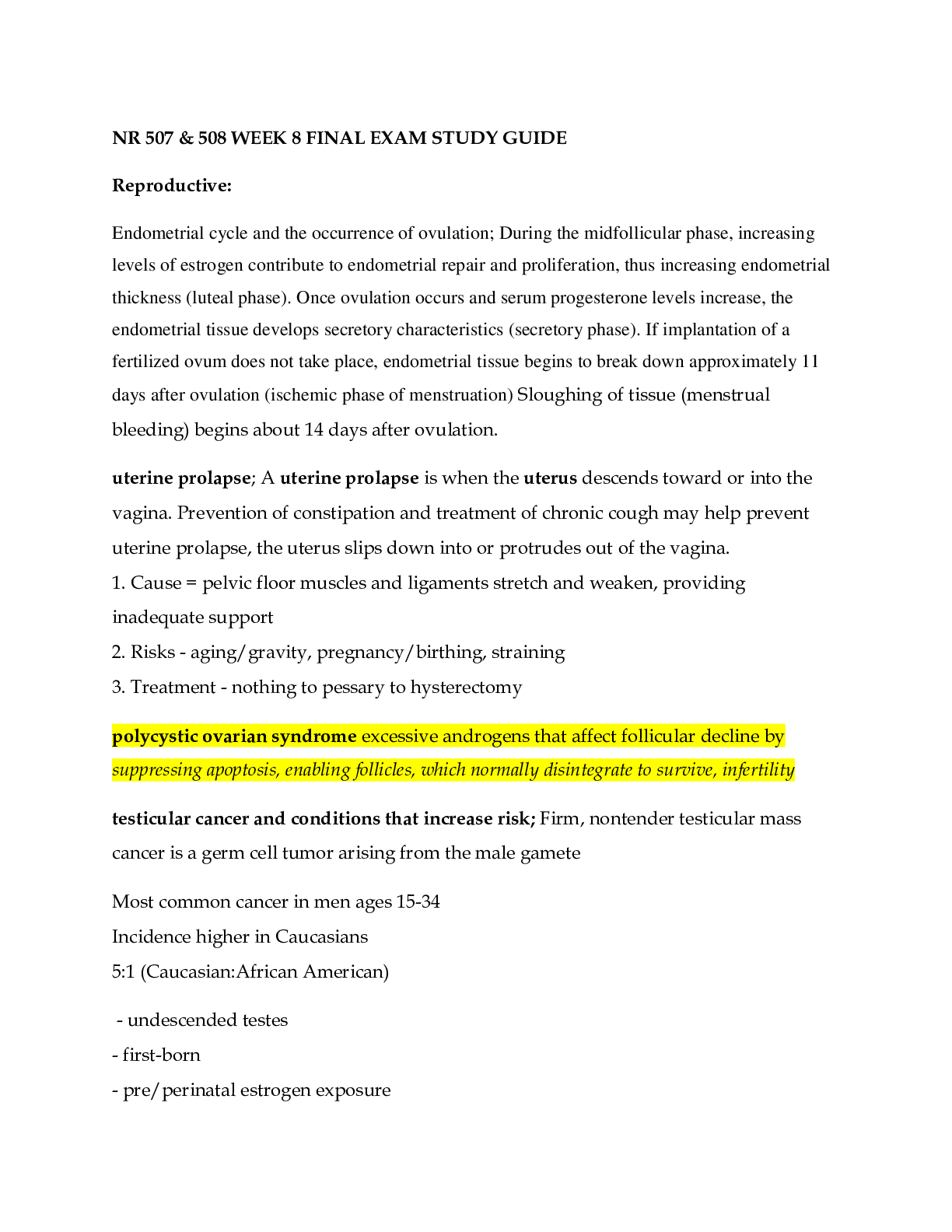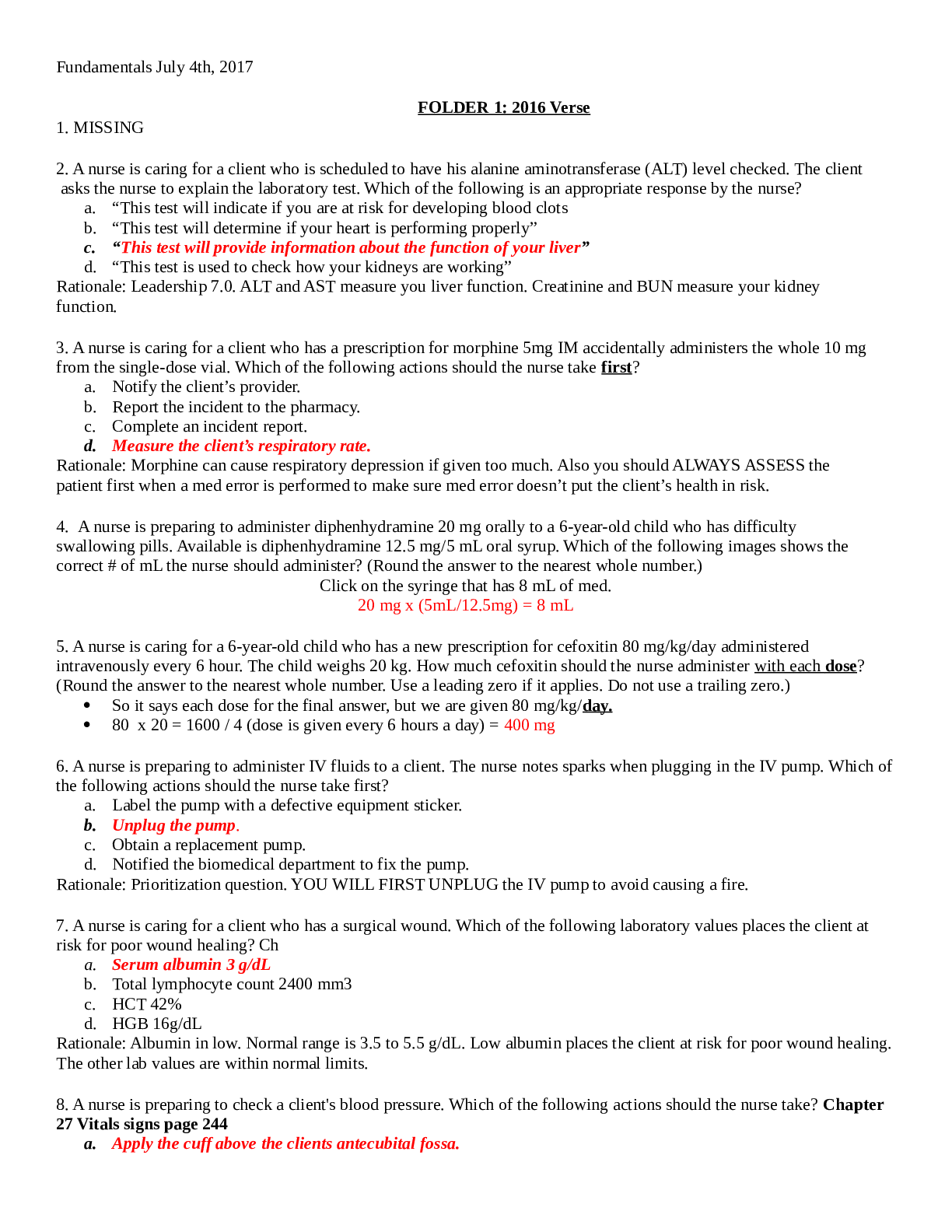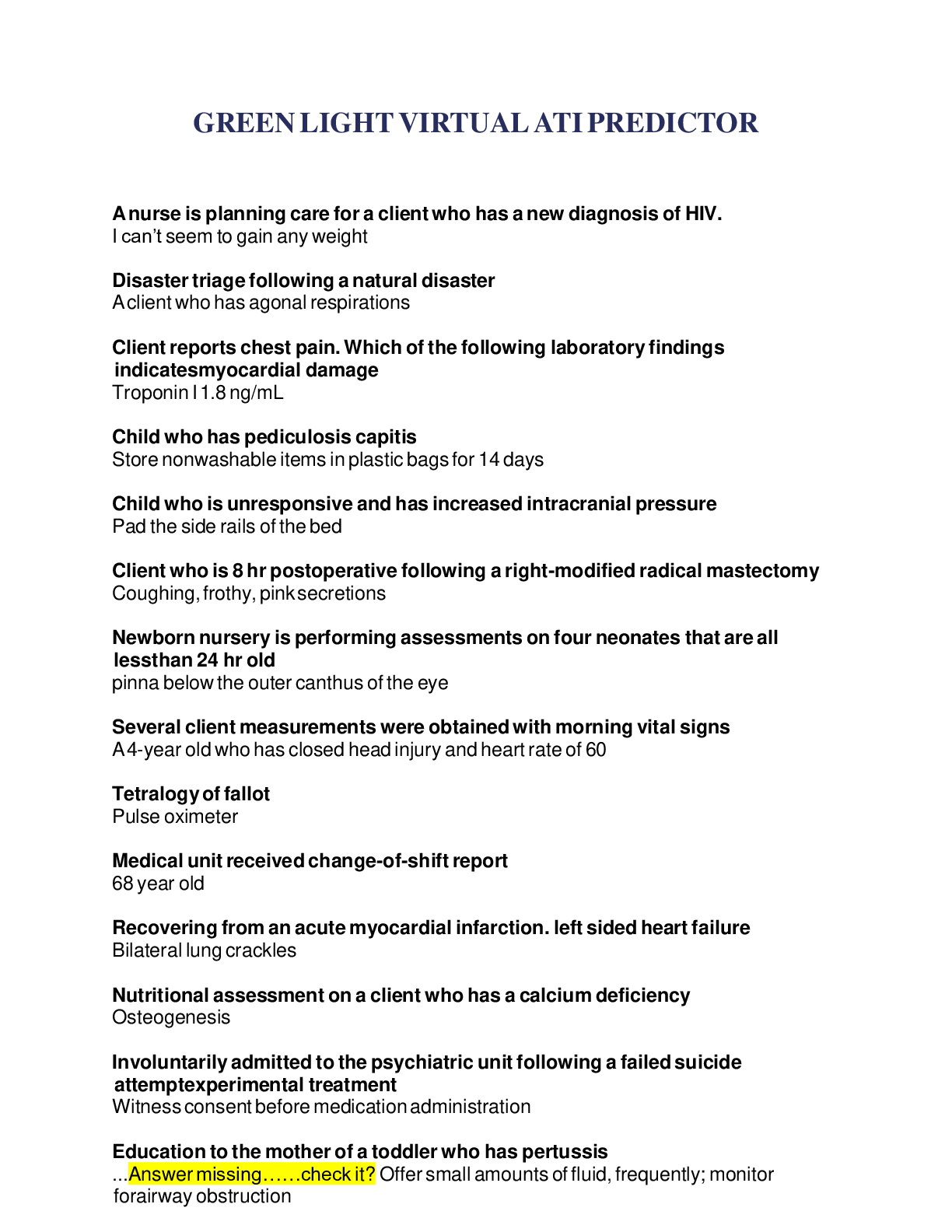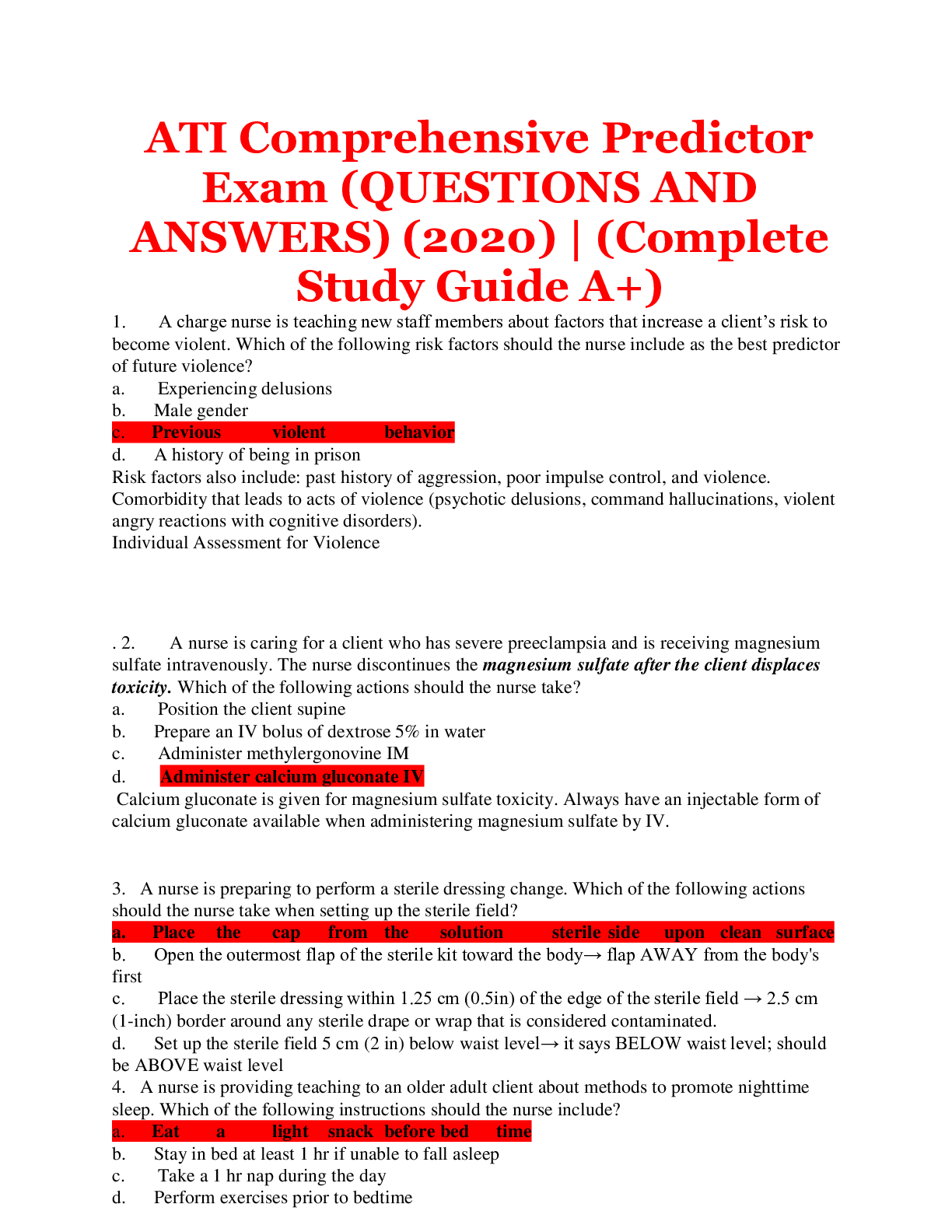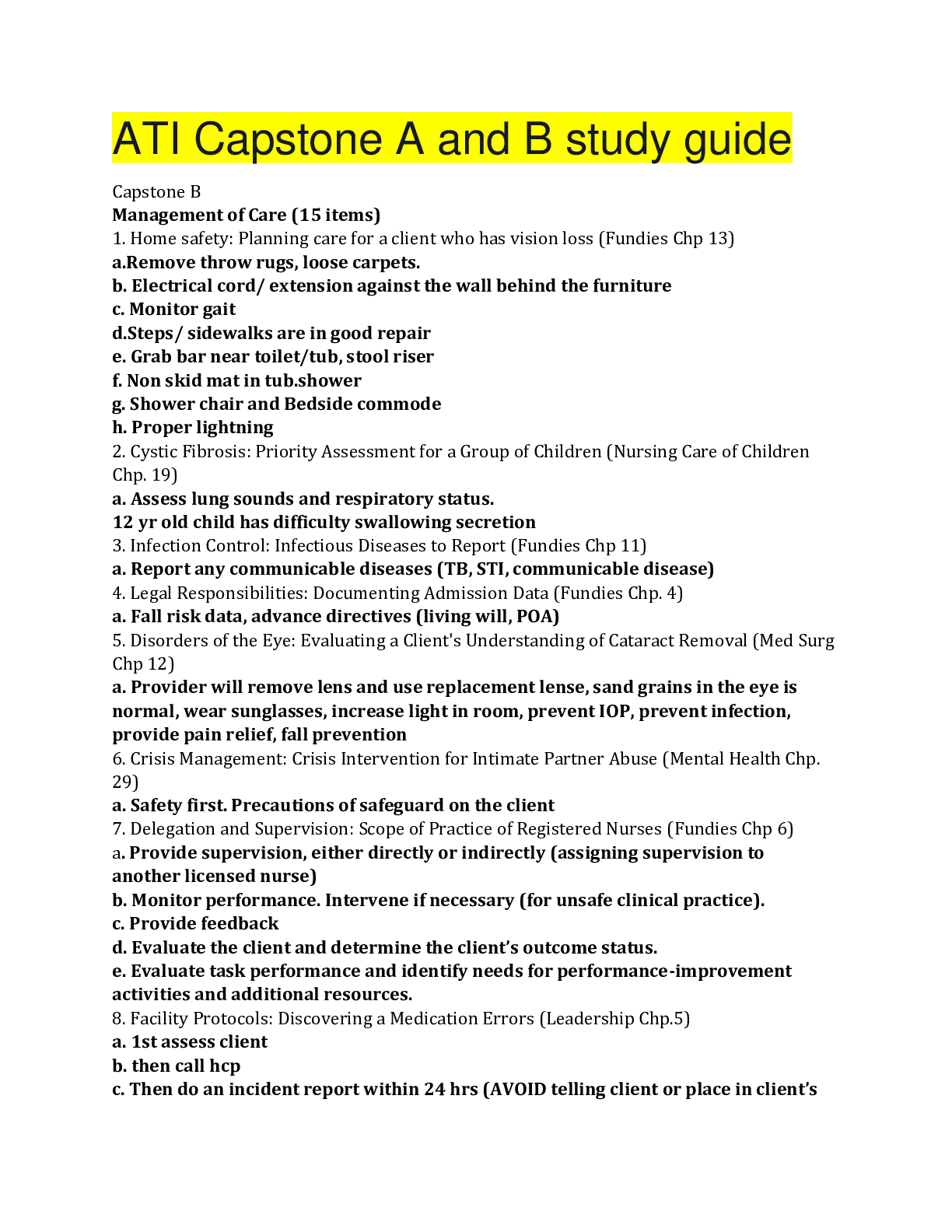*NURSING > QUESTIONS and ANSWERS > WGU D236 pathophysiology Exam - 100% Ranked Exam With Verified Questions And Answers-2022- 2023 (All)
WGU D236 pathophysiology Exam - 100% Ranked Exam With Verified Questions And Answers-2022- 2023
Document Content and Description Below
Patho OA Study Guide 1. why a nutritionally deficient child would have edema? Starling’s Law describes how fluids move across the capillary membrane. There are two major What is Starling's Law o... f Capillary forces? How does this explain opposing forces that act to balance each other, hydrostatic pressure (pushing water out of the capillaries) and osmotic pressure (including oncontic pressure, which pushes fluid into the capillaries). Both electrolytes and proteins (oncontic pressure) in the blood affect osmotic pressure, high electrolyte and protein concentrations in the blood would cause water to leave the cells and interstitial space and enter the blood stream to dilute the high concentrations. On, the other hand, low electrolyte and protein concentrations (as seen in a nutritionally deficient child) would cause water to leave the capillaries and enter the cells and interstitial fluid which can lead to edema. 2. How does the RAAS (Renin-Angiotensin-Aldosterone System) result in increased blood volume and increased blood pressure? A drop in blood pressure is sensed by the kidneys by low perfusion, which in turn begins to secrete renin. Renin then triggers the liver to produce angiotensinogen, which is converted to Angiotensin I in the lungs and then angiotensin II by the enzyme Angiotensin-converting enzyme (ACE). Angiotensin II stimulates peripheral arterial vasoconstriction which raises BP. Angiotensin II is also stimulating the adrenal gland to release aldosterone, which acts to increase sodium and water reabsorption increasing blood volume, while also increased potassium secretion in urine. 3. How can hyperkalemia lead to cardiac arrest? Normal levels of potassium are between 3.5 and 5.2 mEq/dL. Hyperkalemia refers to potassium levels higher that 5.2 mEq/dL. A major function of potassium is to conduct nerve impulses in muscles. Too low and muscle weakness occurs and too much can cause muscle spasms. This is especially dangerous in the heart muscle and an irregular heartbeat can cause a heart attack. [Show More]
Last updated: 11 months ago
Preview 1 out of 26 pages
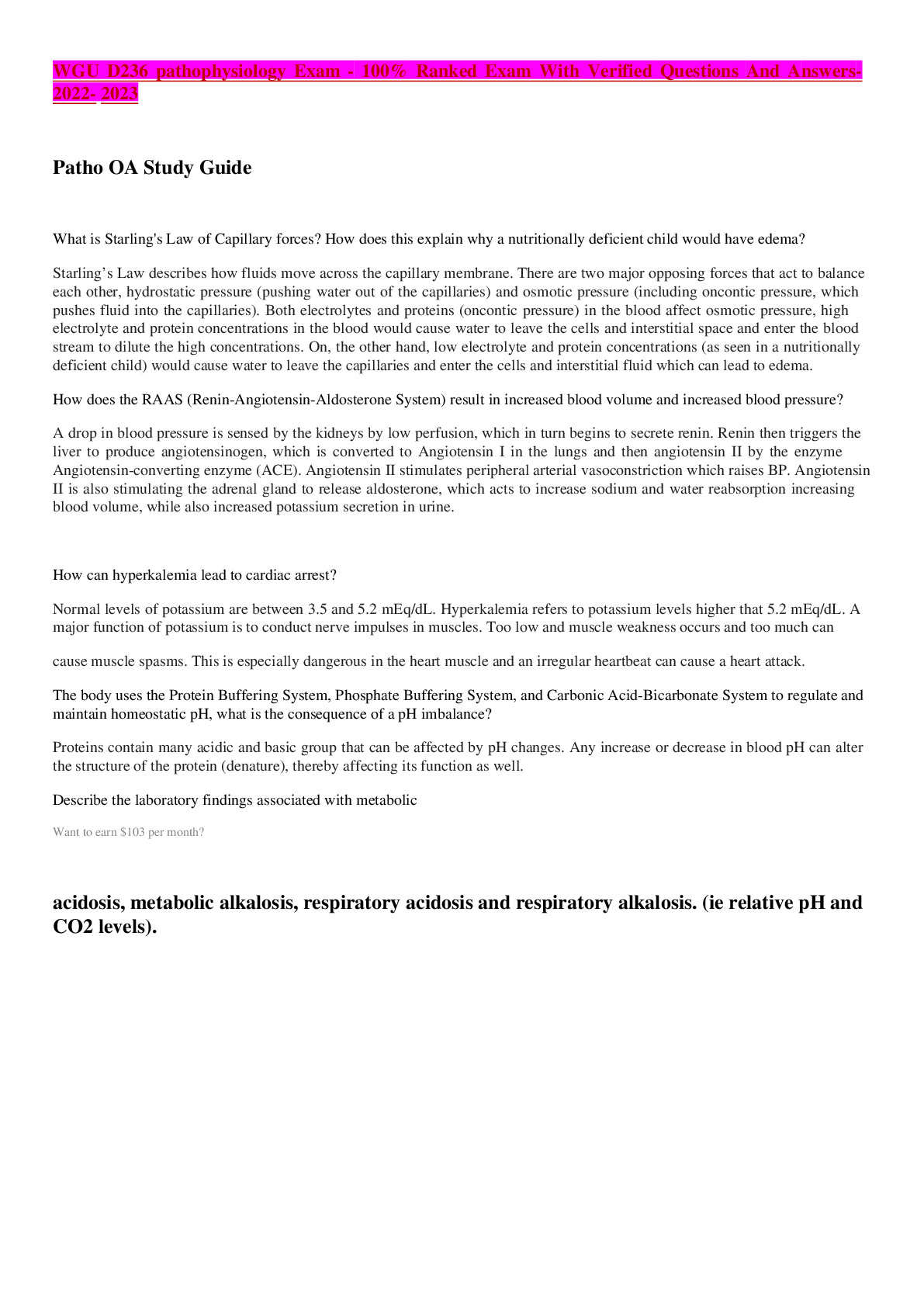
Reviews( 0 )
Document information
Connected school, study & course
About the document
Uploaded On
May 16, 2023
Number of pages
26
Written in
Additional information
This document has been written for:
Uploaded
May 16, 2023
Downloads
0
Views
75


